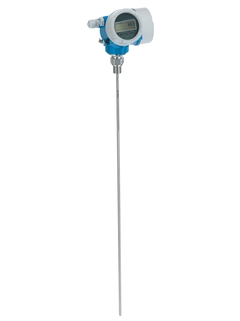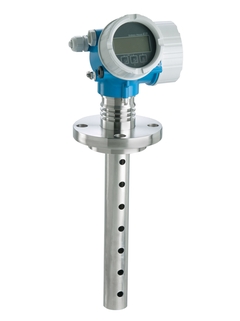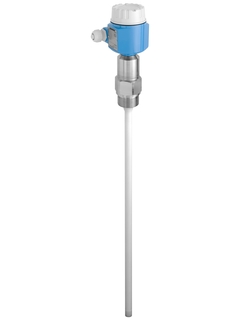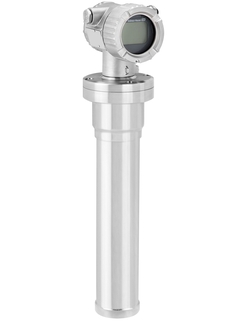Endress+Hauser highlights growing trends within the process automation industry
Discover the top 10 most viewed blogs of 2022 covering challenges and solutions across all industries May 9, 2023 – […]
Interface level measurement plays a critical role in many process industries, particularly oil and gas. Safety and profitability hinges on the accuracy and reliability of these types of measurements, so companies work to optimize solutions throughout the oil and gas value chain.
Measurement accuracy is essential in a number of procedures, first off in custody transfer. With over 90 million barrels of oil consumed every day globally, the value chain to drill, produce, transport, store and deliver to the consumer can introduce even marginal quantification errors. This is caused by limited level measurement instruments which can result in multimillion-dollar discrepancies.
Level measurement is also critical for contamination detection, ensuring constituents are adequately removed or separated prior to refining and other processes. Finally, accurate measurement provides process insights, helping teams track efficiencies throughout the value chain to point out areas for potential process improvements.
Because no process level measurement method fits all applications, engineering and design teams must take care to properly categorize the media, and then specify the right instrumentation. Different constituents of mixtures have varying characteristics—such as density, dielectric and API value– certain technologies are better-suited to quantify and differentiate particular mediums than others.
Precise interface layer measurement is important throughout the oil and gas process and the first step is understanding the interface composition of a given application. The three primary interface makeups are clear separation, emulsion and multi-layer.

Clear Separation
Clear separation defines processes with a clean break between layers in a tank or vessel, as is the case of settled oil and water. In this example, polar water molecules and non-polar oil molecules are immiscible. Clear separation is the easiest interface to detect with level instrumentation, and quantifying the distinct layers is consequently straightforward.
Emulsion
An emulsion layer—also called a rag layer—is an area where two liquid products have not fully separated. The thicker the layer, the more challenging it becomes to measure the true interface level.

Crude oil is one example of an emulsion interface. A separator is used to remove water from the bottom of a vessel while the oil floats on top, and accurate measurement of the emulsion interface is critical to prevent wasting oil from the vessel.
Multi-layer
When a well is drilled in the earth, the product pumped to the surface is typically a mixture of crude oil, water, emulsion, gas, sand, and finer solids. The denser layers settle to the bottom of a vessel, while the lighter crude oil and gas suspend above. If a hydrocarbon–water emulsion forms, this complicates the interfaces, requiring careful monitoring, along with heating and pressurization control with a possible addition of a demulsifier additive in the separation process.

Endress+Hauser offers 13 different technologies for measuring level. Among the full portfolio, guided wave radar, capacitance, multiparameter guided wave radar (GWR) and gamma instrumentation provide the most suitable solutions for measuring interface in oil media . However, each of these technologies has strengths and weaknesses, along with ideal applications for use.




| Guided radar Levelflex FMP51/52/54 | Multiparameter guided wave radar (GWR) Levelflex FMP55 | Capacitance Liquicap FMI51/52 | Radiometry Gammapilot FMG50 | |
| Clear interface liquid/liquid | Total level + interface layer | Total level + interface layer | Interface layer | Interface layer (total level with separate instrument) |
| Interface with emulsion layer liquid/liquid | Not possible | Total level + interface layer | Interface layer | Interface layer + emulsion thickness (total level with separate instrument) |
| Multiphase interface | Not possible | Not possible | Not possible | Interface density profile (total level with separate measurement) |
In addition to the above-mentioned technologies, it is important to also include servo tank gauging technology. Instruments such as the Proservo NMS80/81/83 allow for the measurement of both interface and density within your oil media. These applications include storage tanks or large vessels and multiphase interfaces (3-4 layers). Servo technology provides you with unique features to help solve the challenges found within these applications.
When deciding which technology is the best fit for your application, it is critical to consider the entire range of media present in a given process to specify the right technology for the job. Without this forethought, level measurement becomes prone to error.
In this part one of our interface level measurement series, we highlighted the importance of interface level measurement in the oil and gas industry and briefly presented the four primary technologies utilized: guided wave radar, capacitance, multiparameter GWR, and gamma instrumentation.
Discover the top 10 most viewed blogs of 2022 covering challenges and solutions across all industries May 9, 2023 – […]
Liquified natural gas (LNG) is a versatile energy source with a growing role worldwide. During custody transfer, quantity can be […]
Technology you can trust in hazardous areas, critical applications and highly regulated industries The process control industries are characterized by […]
Comments